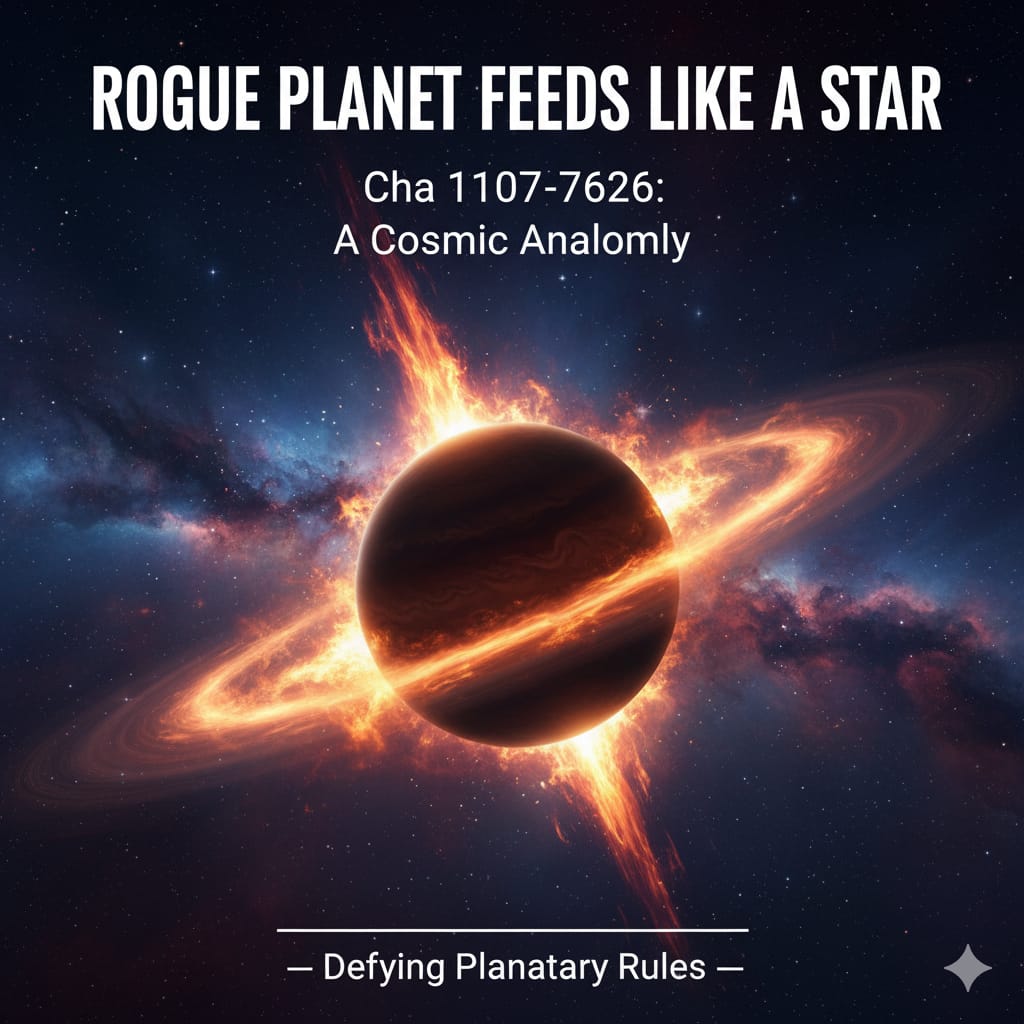
The fundamental division between planets and stars has been challenged by the dramatic discovery of a free-floating world. Astronomers have identified a mysterious rogue planet officially designated Cha 1107-7626, which is exhibiting a behavior typically reserved for much larger, luminous stars. This cosmic anomaly is actively guzzling up matter from its surrounding environment, consuming an estimated six billion tonnes of gas and dust every single second. This unprecedented rate of consumption has stunned the scientific community.
The planet is a "rogue" object, meaning it is untethered to any star system. Unlike the planets in our solar system that dutifully orbit the sun, rogue worlds float freely through the vast expanse of the universe. Scientists estimate that trillions of these solitary planets may exist in our galaxy alone but they are notoriously difficult to spot because they drift quietly and alone in perpetual night.
An Infant World with Stellar Habits
Cha 1107-7626 is located roughly 620 light years from Earth in a region known as the Chamaeleon constellation. Its sheer size is impressive possessing a mass roughly ten times that of Jupiter. Despite its gigantic nature, it is a cosmic newborn estimated to be only one or two million years old.
Dr. Alexander Scholz an astronomer at the University of St Andrews and co-author of the new study, highlighted the object's unique status. He stated that it is "neither a star nor a proper planet". The massive rate at which it is accumulating material, a process known as accretion, has never been observed in a planet before. This rapid consumption suggests the object is undergoing an "astonishing growth spurt" powered by the material it is drawing in.
Belinda Damian another study co-author, noted that Cha 1107-7626 effectively "blurs the line between stars and planets". Stars and brown dwarfs grow by accumulating material through a swirling disk of gas and dust. A planet of this mass engaging in such vigorous, star-like consumption fundamentally challenges the long-held models of how planets form and evolve. It forces scientists to rethink the definitions of celestial bodies particularly at the lower limit of the star-mass range.
The Question of Cosmic Heritage
The discovery of this rogue world is intriguing not only for its feeding habits but also for its mysterious origins. Scientists are debating two primary theories regarding the creation of such free-floating objects. One hypothesis suggests these objects are the lowest-mass bodies formed akin to stars meaning they were born through the collapse of gas clouds. The alternative is that they are giant planets that were violently ejected from their original planetary systems by gravitational upheaval in their chaotic youth.
The team aims to use this discovery as a window into the complex mechanics of early planetary systems. Understanding how Cha 1107-7626 was formed and why it is capable of mimicking the growth of a star will provide invaluable data. This rogue world confirms that the universe is full of unexpected phenomena constantly forcing scientists to update the rules of cosmic physics.





















